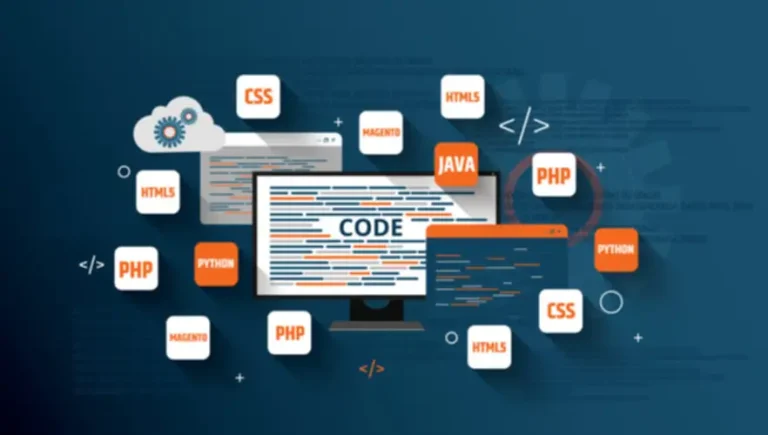Instead, you should attempt automating your deployments as soon as possible and get to a stage the place deployments to your staging environments are accomplished routinely. The cause is, when you have computerized deployments, you’ll be able to focus your power on enhancing your tests somewhat than periodically stopping issues to coordinate a release. If you are just getting started on a model new project with no customers but, it might be simple so that you just can deploy every commit to production. You might even begin by automating your deployments and releasing your alpha model to production with no customers. Then you presumably can ramp up your testing culture ci cd monitoring and just be sure you increase code coverage as you build your software.
What Are The Benefits Of Every Practice?
Problems detected in an early stage stop the code from progressing further by way of the pipeline. It doesn’t make sense to run the entire pipeline if we’ve fundamental bugs in code to fix first. Detailed results and logs concerning the failure are immediately sent to the team to repair. For instance, we can break up testing into low-level unit checks, integration tests of system parts Operational Intelligence working collectively, and high-level checks of the consumer interface.
What Is A Machine Learning Pipeline?
There’s an obvious price to implementing each apply, nevertheless it’s largely outweighed by their advantages. Learn how CI practices streamline the merging, building, and testing of code from multiple contributors, facilitating quicker software program development and better quality releases. You’ll need to suppose about what kinds of checks you’re working, what triggers you use to construct your automated testing sequences, and which checks you apply to each coding department your growth teams will work on.
How Continuous Testing Impacts Steady Integration
By using standard business specs, Tekton will work properly with present CI/CD tools similar to Jenkins, Jenkins X, Skaffold, Knative, and OpenShift. Continuous supply is a software program development apply that works at the facet of CI to automate the infrastructure provisioning and application release process. CI/CD additionally permits for quicker feedback loops with stakeholders, ensuring that the ultimate product aligns carefully with user expectations. Overall, it’s a foundational apply for any team aiming for high-speed, high-quality software program growth. Regularly merging small code changes instead is usually a extra accurate and safer process.
Thus, considerations have to be made across the existing engineering infrastructure when installing a CI pipeline. Even with one of the best intentions, teams can make errors that hinder their CI processes. Avoiding these common pitfalls ensures your CI implementation runs easily. Start by splitting by sort (eg. unit and integration), then adopt tools that may parallelize every.

In a DevOps framework, continuous integration sits firstly of the software program growth process. DevOps pipelines accelerate the supply of high-quality software program by automating and combining the efforts of improvement and IT operations teams, which historically existed in their very own silos. Central repositories serve as the cornerstone of CI practices and are often managed by model management systems (VCSs) corresponding to Git and Bitbucket. When developers submit adjustments, the central repository retains track of them, creating a complete history of code modifications that improvement teams can use to collaborate more effectively.
CI/CD is a key part of DevOps, however DevOps extends beyond CI/CD to include infrastructure administration, monitoring, and steady enchancment. Continuous integration is a means for your group to mechanically build and test every single change within the source code. This is the inspiration that allows your broader software program delivery process to be efficient, resilient, quick, and secure. Continuous integration requires all builders who work on a project to decide to it. Results have to be transparently out there to all team members and construct standing reported to developers when they’re altering the code.
Make CI part of your Agile course of by aligning it with dash planning and critiques. Use the suggestions from CI builds to guide prioritization and improve transparency. Starting with CI includes establishing a course of that aligns along with your team’s objectives and workflows. For instance, run scheduled workflows to detect newer variations of your libraries and upgrade them. Whatever CI software you choose, we recommend that you simply decide the one which maximizes your organization’s productiveness.
Part of that is making a manufacturing environment equivalent to what clients might be using to test particular person software program releases. Organizations that successfully adopt CI typically report larger testing reliability. This is as a outcome of testing becomes a steady and routine part of their software improvement lifecycle. When checks fail, it either signifies flaws with the software or that the take a look at itself must be rewritten.

Continuous testing is carried out to find bugs as soon as they seem in a codebase. The continuous testing course of makes use of automated instruments that verify code quality, confirm correct security, after which load premade test scripts and information units to validate supply code efficiencies and look for bugs. Each code change in continuous testing begins a set of checks to establish potential points in the code. Now that we’ve clarified the variations between steady integration, steady supply, and steady deployment, we have to take a look at a few of the key advantages of introducing CI instruments to the construct course of.

This helps keep the readability and maintainability of the code, making it simpler for team members to know and modify. It is carefully related to continuous integration and refers to maintaining your utility deployable at any level. It includes frequent, automated deployment of the master branch to a manufacturing setting following automated testing.
- But that, by preventing common refactoring, finally ends up permitting cruft to develop all through the codebase.
- As each small change will be examined routinely and the whole group can learn about these changes you’ll want to work on small, incremental adjustments when developing new options.
- As customized purposes turn out to be key to how corporations differentiate, the rate at which code could be released has turn out to be a competitive differentiator.
At this point, code modifications have handed all the testing protocols and are therefore safe and ready for public use. CI scripts or tools then move the software artifact to public servers or distribution platforms (such as utility stores) and push the update to finish users. The next step in the pipeline is continuous supply (CD), which puts the validated code adjustments made in steady integration into select environments or code repositories, similar to GitHub. By automating CI/CD all through growth, testing, manufacturing, and monitoring phases of the software growth lifecycle, organizations are able to develop greater quality code, quicker and extra securely. Although it’s attainable to manually execute each of the steps of a CI/CD pipeline, the true value of CI/CD pipelines is realized via automation.
CI/CD pipelines are a practice targeted on bettering software program delivery throughout the software growth life cycle through automation. CI And CD is the apply of automating the combination of code modifications from multiple developers into a single codebase. It is a software development practice where the developers commit their work frequently to the central code repository (Github or Stash).
Transform Your Business With AI Software Development Solutions https://www.globalcloudteam.com/ — be successful, be the first!

